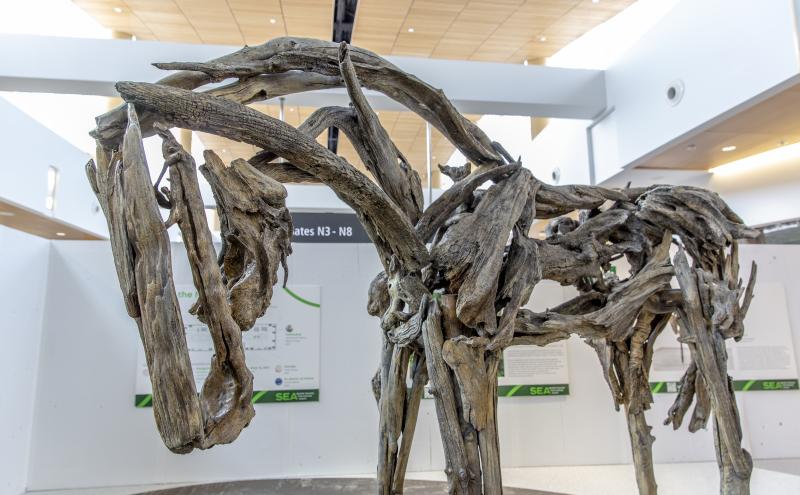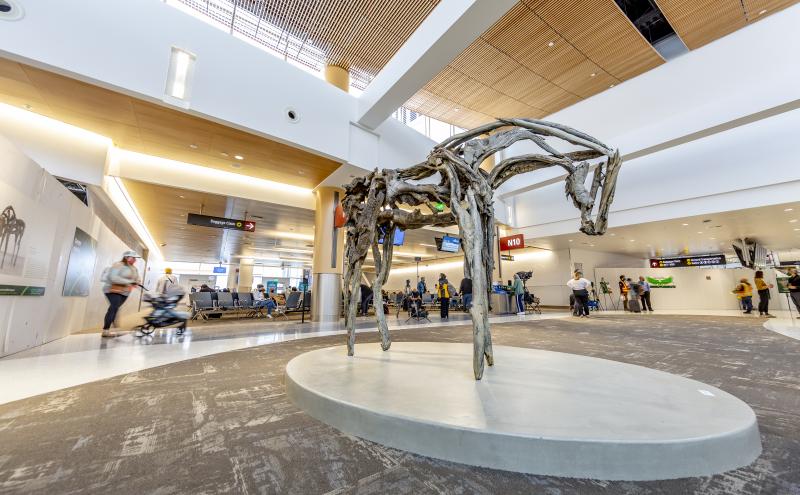



Title: Blackleaf
Artist: Deborah Butterfield
Year: 2017
Medium: Cast bronze
Dimension: 7’3” x 8’10.5”x 3’5.5"
Description of the artwork:
Standing tall (seven feet) in the North Satellite, Blackleaf is a part of Butterfield’s bronze cast collection of works and represents a standing horse.
To create these gentle giants, the artist carefully and intuitively selects the branches and sticks which are used to "draw" her horses. "The lines of the branches do not simply outline the forms of horses, they create the contours through an accumulation of simple or energetic lines that seem to build up from within. This is three-dimensional gesture drawing, and the result is both skeletal and muscular." (Clemans, Gayle. “Deborah Butterfield’s Contemplative horses.” The Seattle Times. July 2011). Then, these models are casted creating one unique sculpture. The artist ends the process by applying a patina, so her sculptures can be exhibited either inside or outside.
Butterfield steers away from depictions of war horses and reflects on the animal’s gentle nature. This can be seen in the way Blackleaf rests its head, and the way its legs are thin to a point that gives the horse a floating quality.
Blackleaf was cast at the Walla Walla Foundry located in Washington state and purchased from a local gallery.
About the artist:
Born and raised in San Diego, California, Deborah Butterfield received her BA and MFA from the University of California, Davis. Deeply connected to horses and nature, Butterfield — who also rides dressage— is a world-renowned artist who specializes in equine forms. She first began creating sculpture in the form of a horse in the 1970’s using mud, clay, and sticks. In 1977, she moved to a ranch in Montana and in 1979 began using scrap metal and found steel. For the past 20 years, she has been making bronze work, cast from “stray, downed pieces of wood.”
Butterfield’s sculptures of horses serve as metaphors for the strength and beauty of nature.
“Since I'm using one subject matter, what I do to myself is vary the materials, vary the limitations, try not to use the same kind of solution that I've used before.... More often than not, I simply respond to the materials and start building, and then the nature of the way the materials find each other starts to indicate the temperament and a physique [of the horse].” - Deborah Butterfield

